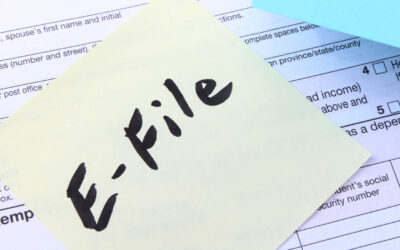The energy efficient commercial buildings deduction under Section 179D has been in effect since January 1, 2006, and was made permanent as part of the Consolidated Appropriations Act of 2021. Section 179D was originally designed to incentivize owners of commercial buildings and four-story or greater multifamily buildings to increase energy efficiency. The newly enacted changes to Section 179D include increases to potential deductions as well as additional opportunity for energy efficient retrofits of older buildings to become eligible for the deduction, by reducing applicable requirements.
Beginning January 1, 2023, Section 179D has been expanded under the Inflation Reduction Act of 2022 to include increased deductions as much as $5.36 per square foot in tax year 2023 for building owners who construct and place in service energy efficient commercial building property (EECBP) or energy efficient commercial building retrofit property (“EEBRP”).
Additionally, it is now easier for real estate investment trusts (REITs) and their shareholders to benefit from the Section 179D deduction. REITs are allowed to reduce earnings and profits (E&P) by the Section 179D deduction amount in the year the energy-efficient components are placed in service (or the year of final certification for retrofit property). In contrast, under prior law, the Section 179D deduction reduced REIT E&P ratably over a period of five tax years.
Eligibility
Under prior law, the Section 179D deduction was only available to owners of qualified commercial buildings (including high rise multifamily buildings at 4+ stories) and designers of EECBP installed in buildings owned by certain government entities. The new law extends eligibility to building owners and designers of EECBP / EEBRP installed in buildings owned by certain government entities and specified tax-exempt entities, including K-12 schools, fire stations, police stations, military bases, prisons, non-profits, hospitals, courthouses, universities, libraries, airports, city parks, and tribal lands.
Building types that are excluded from Section 179D include the following:
- Single-family homes
- Multi-family residential buildings of three or fewer stories above grade
- Manufactured homes
- Buildings without fossil fuel or electricity use
- Cold storage buildings (if they are mostly for refrigeration)
Qualifications
Under prior law, installation of energy-efficient property required the reduction of total annual energy and power costs by 50% to be eligible for the Section 179D deduction. The new law now provides a benefit for older properties that could only achieve a lower threshold of 25% or more in energy savings. Additionally, as an alternative, the level of energy usage, rather than the level of energy cost, is used to determine the extent the building is more energy efficient.
To qualify for the deduction under Section 179D, energy-efficient improvements must be newly constructed or installed by the property owner and can include improvements to the building envelope, energy-efficient lighting, or heating, ventilation, and air conditioning systems that consume less energy. The building must also have been placed in service since January 1, 2006.
It should be noted however that you cannot simply buy a property with pre-existing energy-efficient improvements and claim a deduction under Section 179D.
EECBP must be installed on or in a building located in the U.S. and within the scope of a specified Reference Standard 90.1 of the American Society of Heating, Refrigerating, and Air Conditioning Engineers (ASHRAE) and the Illuminating Engineering Society of North America. EECBP must be certified as being installed as part of a plan to reduce the total annual energy and power costs for specific systems by 25% or more in comparison to a reference building meeting the minimum requirements of Reference Standard 90.1.
EEBRP must be installed on or in a qualified building located in the U.S. and originally placed in service not less than 5 years before the establishment of a qualified retrofit plan for the building. EEBRP deductions can only be claimed by the taxpayer after the equipment is in service for at least one year and the project results in anticipated energy use intensity reductions. A qualified professional must then make a final certification to show the efficiency gain. We can make an introduction to consultants that can provide the calculations and certifications.
EECBP and EEBRP must be certified by an IRS-qualified professional engineer or contractor licensed in the same jurisdiction as the proposed building and must be property for which depreciation or amortization is allowable. Qualified improvements must be part of:
- The interior lighting systems (exterior lighting does not qualify)
- The heating, cooling, ventilation (HVAC), and hot water systems
- The building envelope (e.g., windows and roofing)
Deductions
The deduction is calculated based on the square footage of the building and the energy cost savings achieved by these improvements. As noted under eligibility requirements, the Section 179D deduction is not just for building owners. Certain designers, such as architects, engineers, and contractors, can also take this deduction for public buildings, such as schools or government offices.
For property placed in service in 2023 and after, the deduction equals the lesser of the cost of the installed property or the savings per square foot. This is calculated as:
- $0.54 per square foot for a building with 25% energy savings
- Plus $0.02 per square foot for each percentage point of energy savings above 25%
- Up to a maximum of $1.07 per square foot for a building with 50% energy savings
Beginning in 2023, if local prevailing wages are paid and apprenticeship requirements are met, an increased maximum deduction applies. The maximum amount increases to 5 times the savings per square foot amount. The deduction starts at $2.68 per sq. ft., provided the requisite 25% energy savings baseline has been met. The additional deduction for each additional percentage point of energy savings above the 25% baseline is $0.11 per square foot, up to a maximum of $5.36 per square foot.
To meet the prevailing wage standards, those employed by the taxpayer are to be paid wages at rates that meet or exceed the prevailing wage for that locality. The prevailing wage standards are maintained by the Department of Labor.
Deduction Limitation
For property placed in service before January 1, 2023, the deduction is capped at $1.88 per square foot (indexed for inflation after 2020) for buildings with 50% energy savings. Under prior law, this served as a lifetime limitation on the amount of Section 179D deduction that could be taken with respect to any specific building.
There is no lifetime limitation under the new rules. Instead, expenses deducted in the prior 3 years (4 years in the case of buildings owned by a governmental or tribal entity or tax-exempt organization) reduce the maximum deduction before computing the current-year deduction. As a result, periodically undertaking energy-efficient projects allows for an additional benefit under the new rules.
Summary of Changes for Current vs. Prior Law
| Tax year beginning on or after 1/1/23 | Tax year ending on or before 12/31/22 |
|---|---|
|
Eligibility
|
Eligibility
|
|
ASHRAE Standards More recent of:
Retrofit election:
|
ASHRAE Standards Most recent ASHRAE Standard 90.1 affirmed by the IRS not later than two years prior to the date when construction of the building began. |
|
Deductions Base:
Prevailing wage and apprenticeship bonus:
|
Deductions Base:
|
|
Deduction Limitation Current-year deduction is reduced by the amount of any Section 179D deduction taken for the building in the immediate three preceding years (four years in the case of buildings owned by a governmental or tribal entity or tax-exempt organization). |
Deduction Limitation Lifetime limitation of $1.88 per sq. ft. with respect to any specific building. |
Final Impressions
As the above summary shows, the Inflation Reduction Act’s modifications and new provisions under Section 179D create additional tax savings opportunities for taxpayers that construct, renovate, or retrofit energy-efficient building improvements. These provisions broaden the scope of taxpayers eligible for the deduction. Any building owner considering making energy-efficient improvements should consider a deduction under Section 179D as part of their annual tax planning to identify tax savings opportunities.
For energy-efficient improvements made in prior years, the Section 179D deduction can be claimed for projects placed in service after January 1, 2006, by filing a Form 3115. Furthermore, the past 3 years’ tax return can be amended to claim the Section 179D deduction, which may provide an additional refund from the IRS.
For tax years beginning on or after January 1, 2024, the maximum deduction allowed has increased to $5.65 per square foot for 50% energy efficiency savings and the bonus for meeting the prevailing wage and apprenticeship requirements. It is therefore even more advantageous for building owners to consider a Section 179D deduction in the current year with the inflation adjustment.
Taxpayers use Form 7205 to report a Section 179D deduction. The instructions to the form provide additional details on reporting requirements. As stated, information on the person performing the certification is required. A copy of the certificate must also accompany the return.
Lastly, state conformity is another consideration for the Section 179D deduction. It is advisable to consult with us, or your tax preparer, to determine if your state allows for this deduction. California, for example, does not conform to Section 179D and no deduction is allowed for state tax purposes.
While there is a fair amount of complexity to this, we encourage you to note the possible significance of this benefit and reach out to us for both a referral to the consultants required, and if you have any questions.





